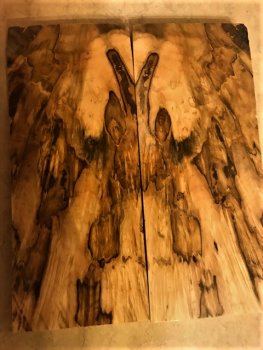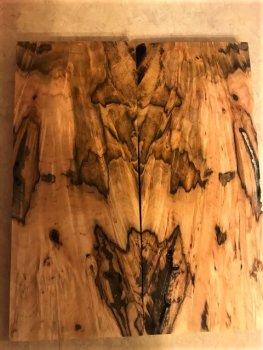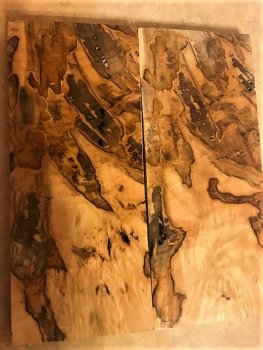KentuckyFisherman
Well-Known Member
A couple of weeks ago I ordered on ebay a maple burl block that was 6.5x6.5x2.5. While the block wasn't stabilized, the wood appeared plenty hard and solid to use as is. I cut about half the block and got three sets of scales, then it dawned on me that since the block seemed fairly heavy, it might not have been dried. I went back and checked the seller's comments and drying wasn't mentioned. I decided to try drying the scales I had cut in my jerky dehydrator at 95 degrees. I weighed each piece and recorded it on masking tape. The blocks lost the most weight in the first 10-12 hours of drying, then only lost a little across another 12 hours. They averaged 17% weight loss and there was no warping or cracking.
My questions are:
1) Does that 17% weight loss in drying sounds about right?
2) Since I didn't see any warping during the drying, should the scales be stable enough to work?
3) I'm considering dying some of these scales with alcohol-based dye. Should I dye the scales before attaching and shaping them, or wait until the shape is like I want it and then dye them?
I attached photos of the scales I cut. Thanks in advance for sharing your expertise with a newbie.



My questions are:
1) Does that 17% weight loss in drying sounds about right?
2) Since I didn't see any warping during the drying, should the scales be stable enough to work?
3) I'm considering dying some of these scales with alcohol-based dye. Should I dye the scales before attaching and shaping them, or wait until the shape is like I want it and then dye them?
I attached photos of the scales I cut. Thanks in advance for sharing your expertise with a newbie.





